| |
|
| |
Did you know that about half the people you encounter in a
day's time have an I.Q. of less than 100? That could explain a
lot about the sort of day you're having.
Of course, the other half has an I.Q of more than 100. That
stands to reason, since 100 is the average. One hundred is
considered normal mental acuity for whatever your age might be.
So I suppose the sort of day you're having could depend on
which half of the population you spend your time with. Many
automobile drivers are in the lower half - the troglodytes. |
|
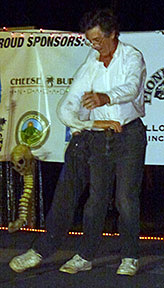 |
|
| |
|
|
What's wrong with this picture? |
|
Troglodytes is a Greek word, still in common usage, to name
people who creep into holes, or caves. They're not well-acquainted with world affairs, nor do they subscribe to
community values.
The troglodytes among us creep out of their holes and into
their cars. They drive like they're chasing down mastodons for
dinner.
They're not, really. They're just driving to Costco or
somewhere for a side of beef or a roasted chicken, but their hunter-gatherer Stone
Age genes think they're in hot pursuit of a beast when they're
behind the wheel of a car. You see them every day, turning
across three lanes of traffic when they spy a bison or
some other four-legged prey duck behind a building.
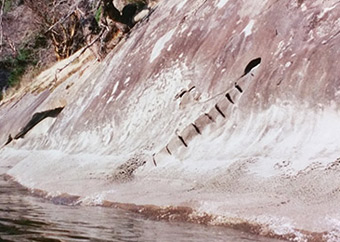
Fossilized palmetto palm, 50-60 million years old,
near Bellingham, Washington
The earliest known cave dwellers were French. That's not a
reflection, necessarily, on the French people of today. It's
just that stone tools a half million years old were found in a
cave on the French Riviera. Older stone tools have been found,
but not in caves.
In fact, the Stone Age began 2.5 million years ago, and
ended, for most of us, 5,000 years ago with the Bronze Age.
| |
 |
|
 |
|
| |
Bicycle graveyard, 10-15 years old |
|
Dead deux chevaux, 40-70 years old |
|
The Stone Age keeps on going for some of Earth's peoples,
and it's from them that scientists learn about early lifestyles
of the poor and unknown peoples of the past. Present day Stone-Agers live in New Guinea, Australia, and Brazil.
| |
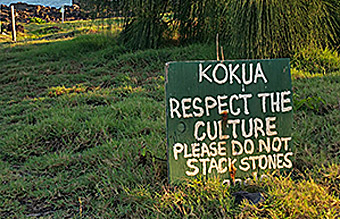 |
|
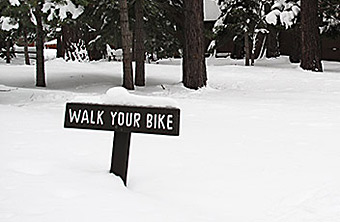 |
|
| |
Uh, OK... |
|
...if you say so. |
|
In some respects our Stone Age ancestors lived healthier
lives than we do today. The reason is that their bodies and
minds were in tune with their lifestyles. Their biology evolved
and harmonized with the tasks required to stay alive.
| |
That evolution took place over a few million years. The
lifestyle changes of the last 5000 have happened too quickly
for our systems to adapt. In fact, humans haven't changed much
in 35,000 years, and we're not likely to change anytime soon. |
|
|
|
| |
|
|
Troglodyte brainstorm |
|
It's mainly during the last two hundred years, since the
industrial revolution, that we've bunched together in huge
groups in the name of human progress. Our society and
institutions keep evolving, because our intellects have
improved by leaps and bounds.
| |
 |
|
But our biology can't catch up with the demands. That's
where stress comes from. We haven't even adapted to electricity
yet. But we love it. We want so much from ourselves and life
that we even stay up impossibly late just so we don't miss
anything and get a few extra things done. |
|
| |
Huh? |
|
|
|
Some scientists suggest that we should adopt Stone Age ways
to stay more in tune with ourselves. That might be pretty
difficult. In early Stone Age time, only a few thousand people
lived in all of Africa, and another few thousand in Asia.
They lived in groups of up to 50, and stayed with that group
all their lives. Imagine spending your entire life with one
small wandering group, and probably never seeing strangers.

In the city, we encounter different groups of at least 50
people all day long. Your office might have 50 people you deal
with, but you have lunch with another group of 50, grocery shop
with yet another group of 50 and maybe go see a movie with a
few hundred more.
We deal with groups of strangers all day long. No wonder
we're stressed. We're always on alert to make sure the
behaviors of others don't get into our personal space. All
those troglodytes make us nervous.
.jpg)
Guinea pig for 12 - The Last Supper
painted on the wall of a cathedral
in Cuzco, Peru by Marcos Zapata
About the Author
| |
Web manager Steve Giordano, past president of the Society of American Travel Writers, is a veteran ski and travel journalist & photographer whose work has appeared in newspapers, magazines, books, radio and television and many places around the Internet. He's written numerous travel books. Steve is the designer and technologist of HighOnAdventure.com and was the online and guidebook editor of SkiSnowboard.com. He is a member of the North American Snowsports Journalists Association and can be reached at [email protected]. |
|
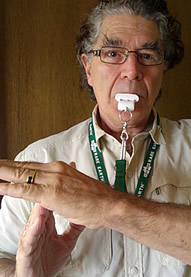 |
|
|
|
|










.jpg)
